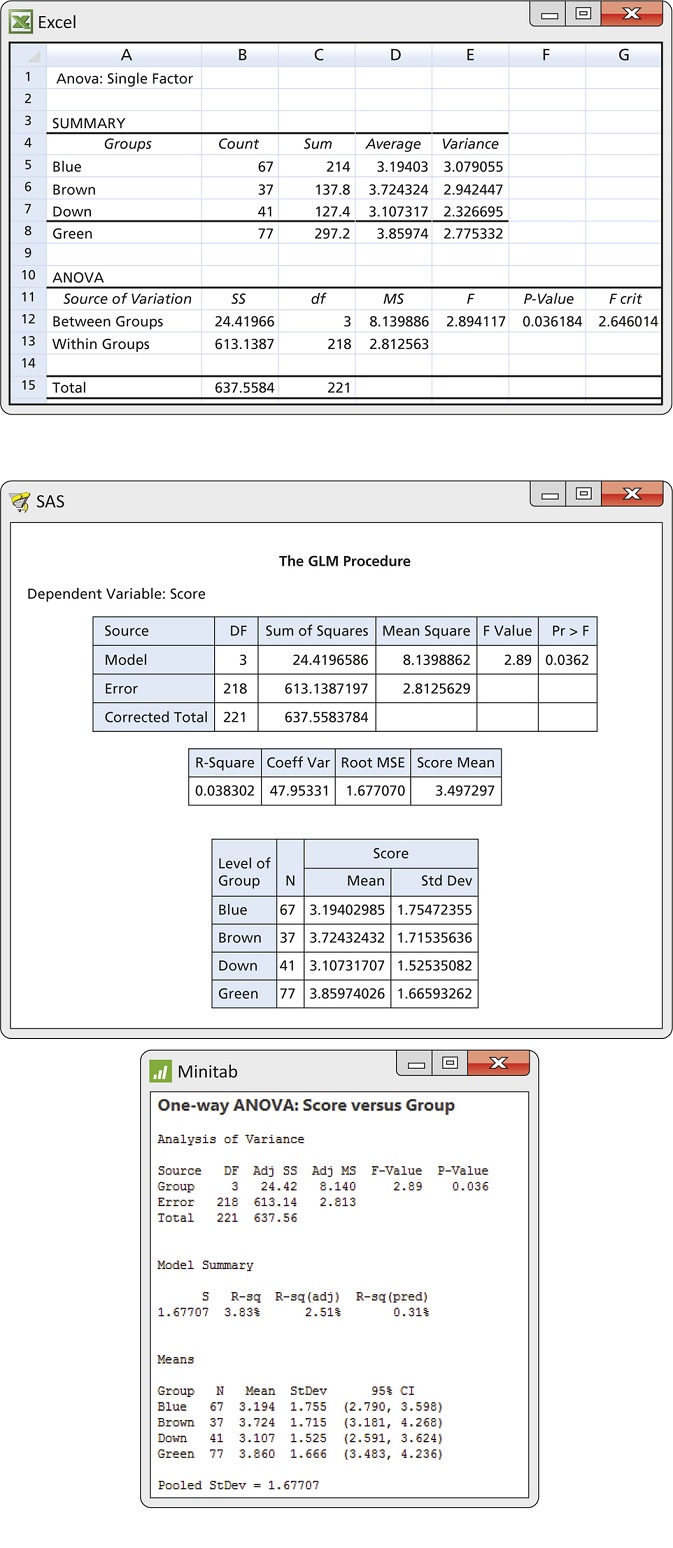EXAMPLE 14.13 Do Eyes Affect Ad Response?
eyes
Research from a variety of fields has found significant effects of eye gaze and eye color on emotions and perceptions such as arousal, attractiveness, and honesty. These findings suggest that a model’s eyes may play a role in a viewer’s response to an ad.
In one study, students in marketing and management classes of a southern, predominantly Hispanic, university were each presented with one of four portfolios.3 Each portfolio contained a target ad for a fictional product, Sparkle Toothpaste. Students were asked to view the ad and then respond to questions concerning their attitudes and emotions about the ad and product. All questions were from advertising-effects questionnaires previously used in the literature. Each response was on a 7-point scale.
Although the researchers investigated nine attitudes and emotions, we focus on the viewer’s “attitudes toward the brand.” This response was obtained by averaging 10 survey questions. The higher the score, the more favorable the attitude.
The target ads were created using two digital photographs of a model. In onepicture, the model is looking directly at the camera so the eyes can be seen. This picture was used in three target ads. The only difference was the model’s eyes, which were made to be either brown, blue, or green. In the second picture, the model is in virtually the same pose but looking downward so the eyes are not visible. A total of 222 surveys were used for analysis. The following table summarizes the responses for the four portfolios. Outputs from Excel, SAS, and Minitab are given in Figure 14.9.
| Group | |||
| Blue | 67 | 3.19 | 1.75 |
| Brown | 37 | 3.72 | 1.72 |
| Green | 77 | 3.86 | 1.67 |
| Down | 41 | 3.11 | 1.53 |
730
There is evidence at the 5% significance level to reject the null hypothesis that the four groups have equal means . In Exercises 14.69 and 14.71 (page 756), you are asked to perform further inference using contrasts.
